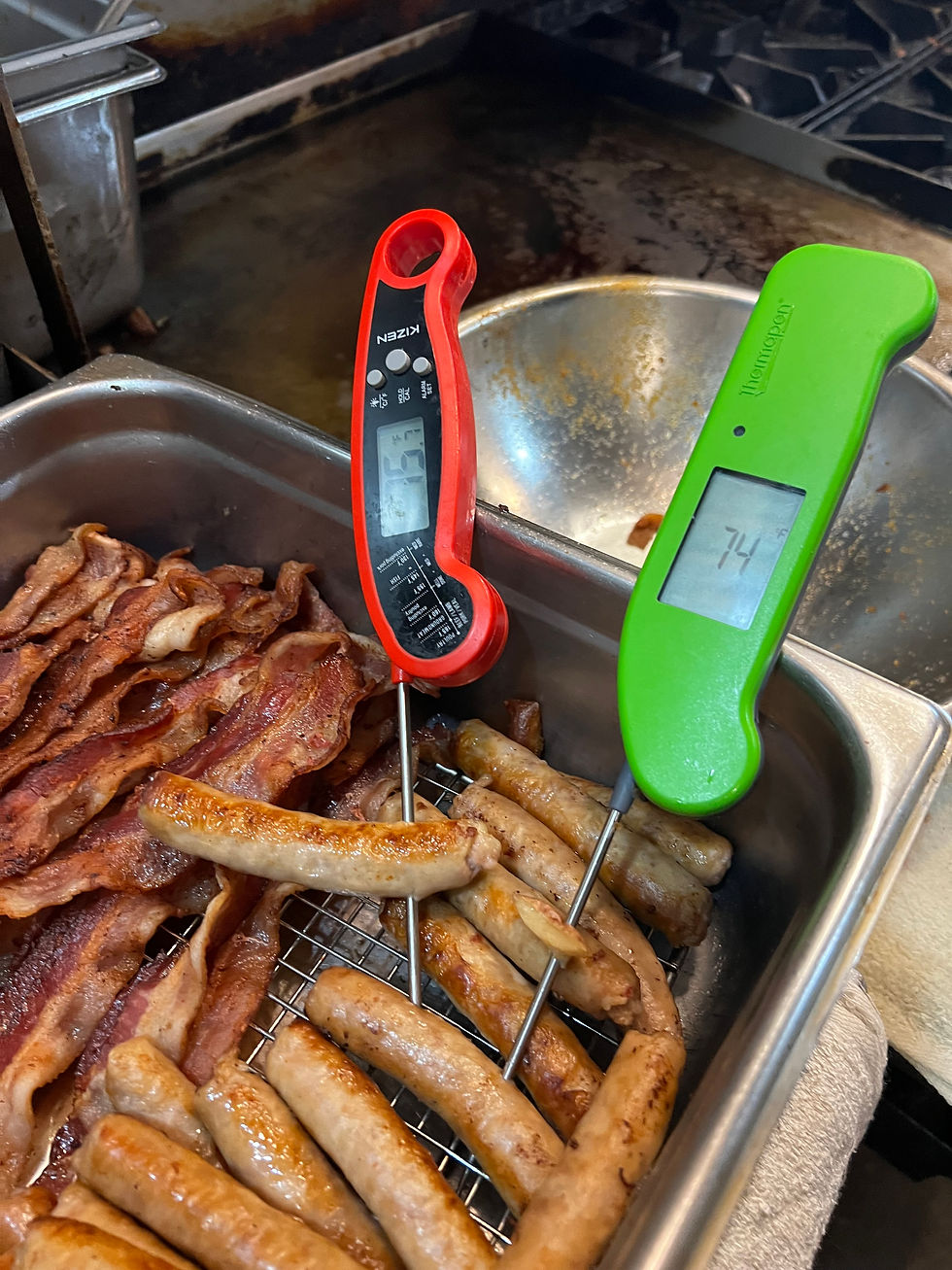A Closer Look - Proper Thawing
- mcfoodsafety
- Mar 13, 2024
- 2 min read
Updated: Mar 27, 2024
This is an example of correct thawing of potentially hazardous food.
Proper Ways to Thaw PHF Foods
It is important to never thaw potentially hazardous foods (PHF) on the counter or in hot water, as this can pose a safety risk by potentially leading to bacterial contamination and the growth of harmful pathogens.
Properly thawing food methods from Oregon Food Sanitation Rules.
1. Refrigeration - (Best practice) Place food in a refrigerator at 41°F or below. Place on a tray to collect drippings and prevent crosscontamination. Thaw raw animal foods on a lower shelf than ready-to-eat foods.
2. Microwave - Microwave thawing begins the cooking process and should immediately be followed by completely cooking the food item.
3. When thawing food under cold running water, make sure it is fully covered and placed in a bowl or similar container with a rim. The running water should be drinkable and no warmer than 70°F, and it should flow over the container's edge to remove any impurities. The food's temperature should not exceed 41°F during the thawing process, and a clean and sanitized food sink must be used.
4. Cooking - When cooking frozen food, ensure that it reaches the appropriate internal temperature for its specific type. Do not stop the cooking process until the food is thoroughly cooked. To ensure even cooking, consider extending the cooking time and stirring frequently.
Incorrect method for thawing squid without running water.

Raw chicken sitting in room-temperature water is an incorrect way to thaw chicken.

Prawns not completely submerged do not meet the Oregon Food Sanitation Rules procedure for proper thawing.

Corrected. Prawns were still below 41F and now fully submerged. This is the correct way to thaw potentially hazardous food.

3-501.13 Thawing.
Except as specified in ¶ (D) of this section, potentially hazardous food (time/temperature control for safety food) shall be
thawed:
(A) Under refrigeration that maintains the food temperature at 5oC (41oF) or less; or
(B) Completely submerged under running water:
(1) At a water temperature of 21oC (70oF) or below,
(2) With sufficient water velocity to agitate and float off loose particles in an overflow, and
(3) For a period of time that does not allow thawed portions of ready-to-eat food to rise above 5oC (41oF), or
(4) For a period of time that does not allow thawed portions of a raw animal food requiring cooking as specified under ¶ 3-401.11(A) or (B) to be above 5oC (41oF), for more than 4 hours including:
(a) The time the food is exposed to the running water and the time needed for preparation for cooking, or
(b) The time it takes under refrigeration to lower the food temperature to 5oC (41oF); C) As part of a cooking process if the food that is frozen is:
(1) Cooked as specified under ¶ 3-401.11(A) or (B) or § 3-401.12, or
(2) Thawed in a microwave oven and immediately transferred to conventional cooking equipment, with no interruption in the process; or
(D) Using any procedure if a portion of frozen ready-to-eat food is thawed and prepared for immediate service in response to
an individual consumer's order.




Comments